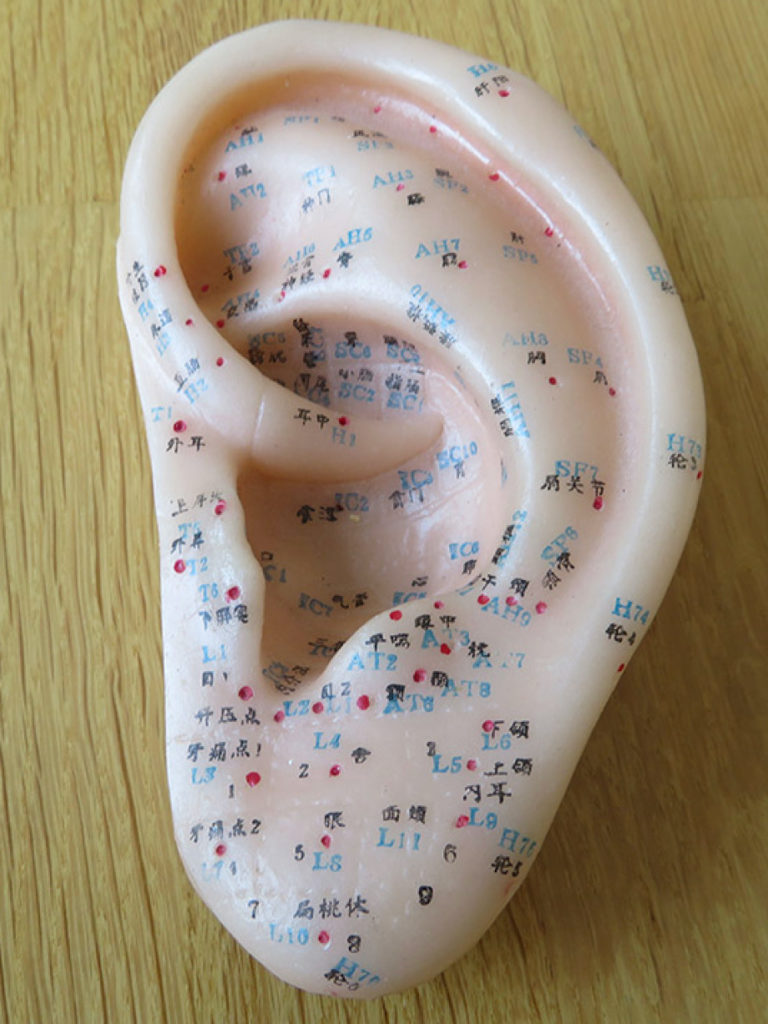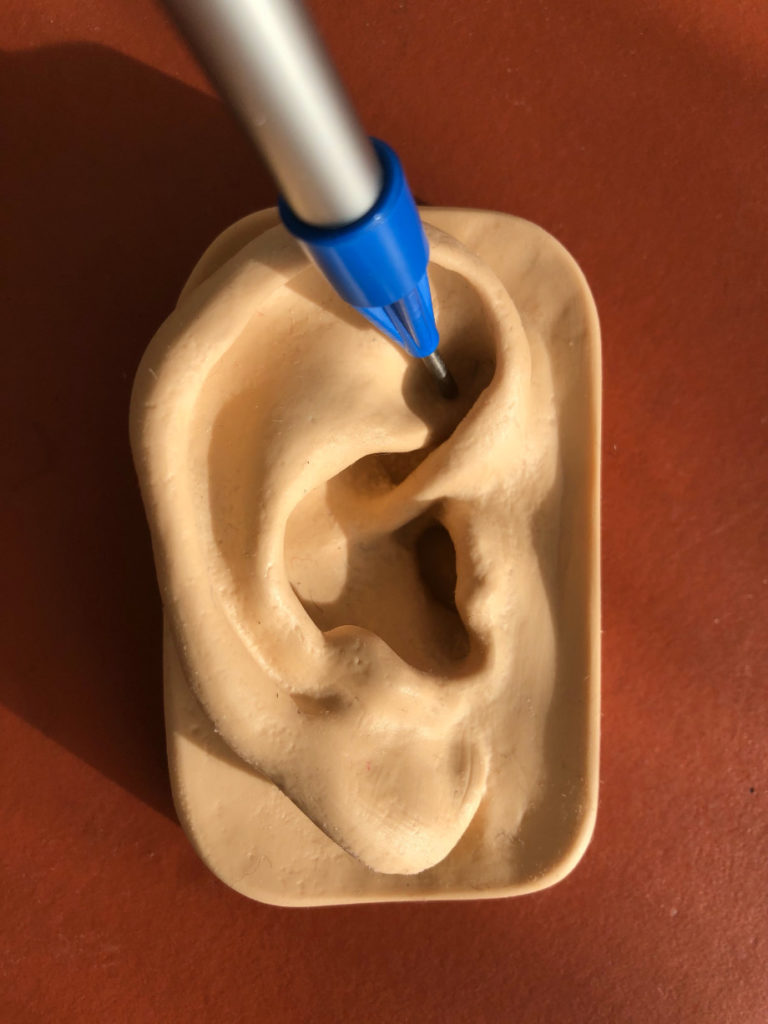AURICULAR THERAPY
AURICULAR THERAPY
Auriculotherapy is the use of the external ear or pavilion for therapeutic purposes.
It is a form of reflex therapy. The pavilion of the ear can be thought of as a map of the human body listing a complex network of points connected to the central nervous system. In the shape of the ear, we can indeed see an upside-down, curled-up fetus with the head and brain in the lobe, the spine along the helix, which is the outer rim of the ear and the organes in the middle




The very rich innervation of the ear, its multiple connections with the brain structures and the somatotopic organization similar to those found in the parietal and frontal lobes explain that one can act on a symptom, an organ or a disease in this way.
Somatotopy is the point-for-point correspondence of an area of the body to a specific point on the central nervous system.
In this schema, one sees the projection of this somatotopic organisation on the surface of the brain figuring the homunculus of Penfield
When a region of the body loses its physiological balance, its point of projection at the level of the ear becomes painful by a reflex mechanism: we can therefore make a diagnosis, then act on the disease by stimulating sensitive points, to which we can associate other points corresponding to more general areas of influence.
This can be done using 3 different methods:
- insertion of an acupuncture-type needle which is left in place for 20-30 minutes,
- insertion of semi-permanent needles, which are a kind of medical bug that can stay in place for several days
- cryoacupuncture, which means applying briefly intense cold to the point with a device using liquid nitrogen
Chinese auriculotherapy differs from the West in that it respects the meridian system, while in the West, anthropomorphic topography is used.
